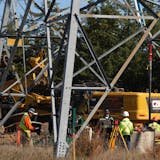The strong growth that’s propelled St. Croix County into one of the fastest growing regions of Wisconsin will slow in the coming years as the state’s population plateaus, according to new projections from the Wisconsin state demographer.
The projections released Thursday say the county’s population will continue to rise this decade and next, but only by about half the rate seen in the past decade.
The neighboring counties of Pierce and Polk, meanwhile, will likely see population declines this decade and into next as the state’s overall population starts to shrink by 2030.
The state population projections, the first since 2013, come as western Wisconsin cities such as Somerset and New Richmond see explosive growth driven in large part by the 2017 opening of the St. Croix Crossing Bridge. New construction in both cities has drawn residents — many of them from Minnesota — looking for a more rural life, lower taxes or less expensive housing, local officials say.
St. Croix County’s population grew by about 11% between 2010 and 2020 —, from about 84,400 to about 91,800, according to the state demographer’s office. This decade, however, growth is expected to slow to about 5% and put St. Croix County in a tie for Wisconsin’s third-fastest growing county behind Dane and Trempealeau counties.
The projections are based on fertility rates and age distribution, said Wisconsin state demographer Dan Barroilhet. They don’t consider such factors as job opportunities that could draw new residents or climate change that could drive a northward migration of people seeking cooler climes.
“Demography typically looks at historical trends rather than things that are going to happen,” said Barroilhet. “If someone says a factory is going to happen, that’s going to be hard to predict.”
People moving in or out of a region cause what demographers call “net migration,” and it can change quickly with less warning or less coherent explanation, Barroilhet said in notes that accompanied the projections.


